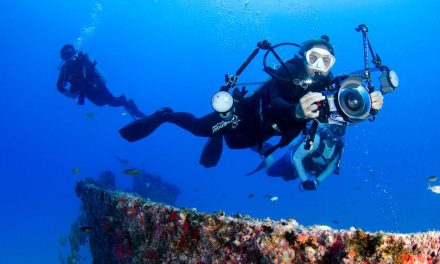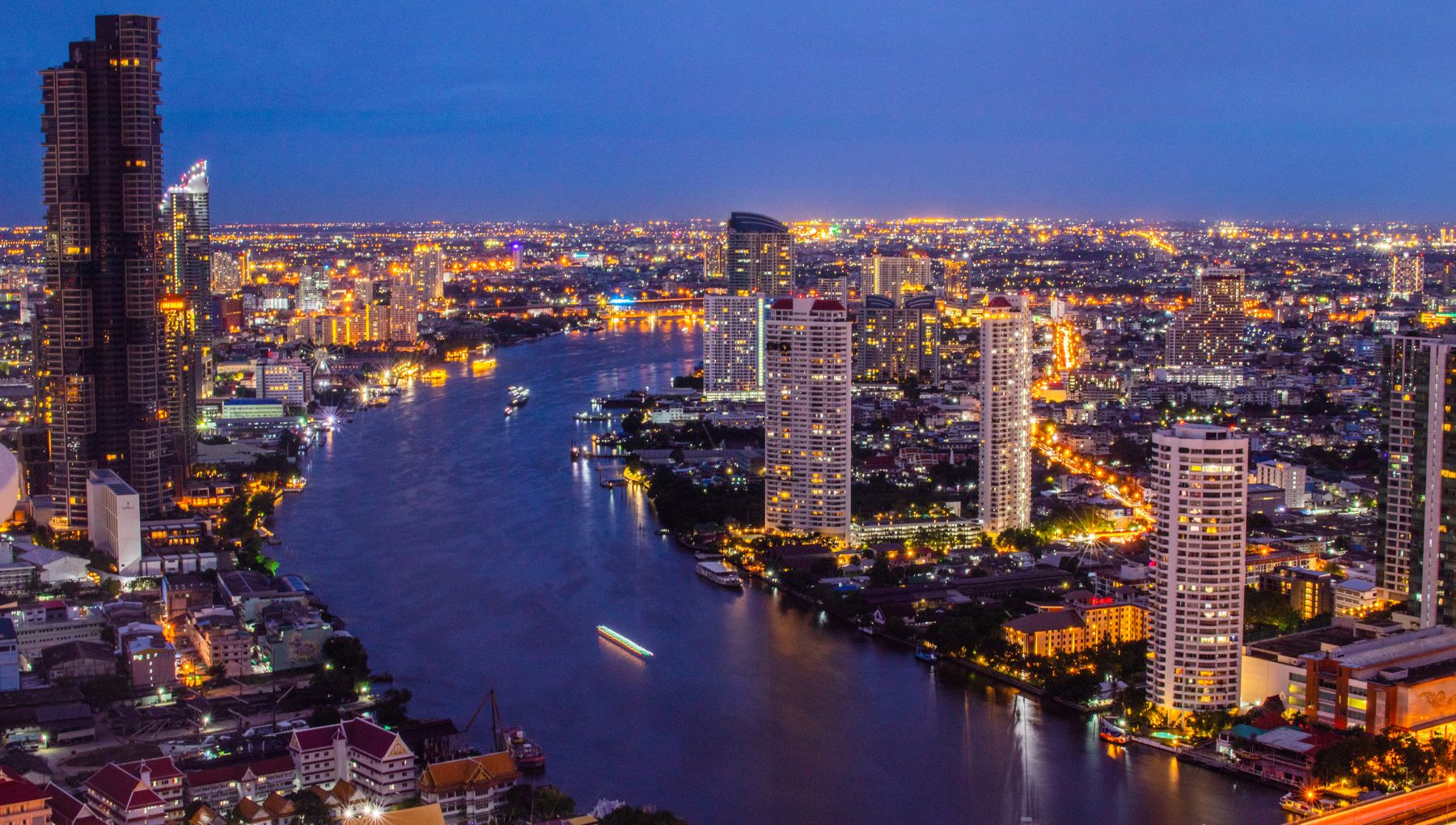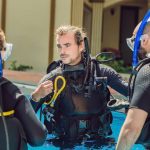Two Unique Diving Cultures And The People’s Lifestyles That Depend On The Ocean
It’s fascinating how some communities have shaped their entire lives around the ocean, mastering diving skills passed through generations. When you explore the Bajau people and Korea’s Haenyeo women, you’ll discover unique traditions, lifestyles, and even biological adaptations that connect them deeply to the sea. These cultures reveal how human life can thrive in harmony with marine environments. To dive deeper into such remarkable ocean stories and cultures, be sure to subscribe to Scuba Life and enrich your understanding of our blue planet.
Let’s start with the Bajau people
The Bajau People: Sea Nomads of Southeast Asia

photo credit: Beritagar
Our journey into understanding the Bajau people reveals a fascinating aquamarine lifestyle. Living on boats or stilt houses across Malaysia, Indonesia, and the Philippines, the Bajau have perfected free-diving to depths beyond 20 meters, holding their breath for several minutes. This incredible skill supports their fishing practices and forms the core of their cultural identity. As you explore their way of life, you appreciate how deeply their survival and traditions are entwined with the ocean’s rhythms and resources. To dive deeper into such unique cultures, make sure to subscribe to Sea Life.
Historical Background of the Bajau People
Below the waves, the Bajau people have thrived for generations as “sea nomads,” adapting their lifestyle to a constant life on the ocean. Their history traces back centuries, marked by a nomadic existence that revolves around fishing and sea gathering. This enduring way of life has shaped a community skilled in breath-hold diving and spearfishing techniques, passed down from parents to children starting in early childhood, securing both sustenance and cultural legacy in their coastal environments.
Deep Connection to the Ocean
For the Bajau, the sea is more than a resource—it’s a living heritage. Your understanding deepens as you realize their intimate knowledge of underwater ecosystems comes from daily interaction and survival. Diving skills are nurtured through lifelong practice, enabling them to harvest marine life sustainably while maintaining a profound respect for the ocean’s balance.
Due to their continuous exposure and reliance on free-diving, the Bajau have developed extraordinary physical abilities, such as enhanced underwater vision and remarkable breath-holding capacity. These adaptations reveal the powerful link between culture and environment, showing how your body can evolve in harmony with your surroundings. By appreciating the Bajau’s ocean life, you gain insight into human resilience and ecological wisdom.
Bajau Diving Techniques and Practices
Assuming you want to understand how the Bajau excel at free-diving, it’s crucial to know their practice starts early in childhood. You’ll see them dive routinely to depths exceeding 20 meters (65 feet), holding their breath for minutes while expertly navigating underwater. This skill is honed through daily immersion and a lifelong relationship with the sea, allowing you to appreciate the incredible physical and mental discipline that defines the Bajau diving way of life.
Traditional Fishing Methods
Traditional Bajau fishing methods rely heavily on spear-fishing, where you’ll notice divers using handcrafted spears to catch fish and gather marine resources. This technique demands precision and patience, as you have to work closely with the sea’s natural rhythms. By engaging deeply with the underwater environment, you develop an intimate understanding of local ecosystems, making these methods sustainable and remarkably efficient for subsistence living.
Cultural Significance of Diving
Alongside providing food and livelihood, diving for the Bajau is woven into their cultural identity and social fabric. When you dive as they do, you connect with generations of sea nomads whose stories, traditions, and knowledge depend on the ocean. Understanding this connection helps you grasp how diving transcends survival—it shapes their values, community roles, and sense of belonging.
At the heart of Bajau society, diving embodies more than a skill; it’s a rite of passage and a symbol of resilience. You engaging with their culture will see that passing down the art of diving from childhood is fundamental to preserving their way of life. Their history and identity are as deep as the waters they master, inspiring you to appreciate the profound human bond with the sea. Don’t miss out on more insights like these—subscribe to Sea Life to dive deeper into ocean cultures.
Korea’s Haenyeo: The Women Divers of Jeju Island

source: Own work
It is truly inspiring how the Haenyeo women of Jeju Island have built a unique diving culture centered on resilience and expertise. You will find that these women dive without breathing apparatus to harvest abalone, seaweed, and shellfish, forming the backbone of their island’s fishing economy. Their remarkable lung capacity and advanced breath-holding abilities are not only cultural traits but also biological adaptations developed over centuries, showcasing the deep connection between people and the ocean. Dive into their story and discover how their skills sustain both community and environment.
Historical Overview
One thousand years ago, the Haenyeo women began their extraordinary tradition of free-diving on Jeju Island. You can appreciate how this diving culture evolved in a matriarchal society where women took on vital roles in seafood harvesting while men often worked onshore. Passed down through generations, their skills were honed from an early age, typically starting around 14, ensuring the survival and economic stability of their communities by living harmoniously with the ocean’s resources.
Role of Women in Diver Culture
Any examination of the Haenyeo culture reveals a powerful female-driven community where women are leaders both underwater and socially. You will see how their diving expertise empowers them within Jeju Island’s economy and social framework, fostering a sense of independence and respect. Their intensive training and physical resilience have created a matriarchal network that defies traditional gender roles, emphasizing women’s central place in maintaining cultural heritage and environmental stewardship.
At the heart of this culture is the way Haenyeo women support and mentor each other, cultivating skills and knowledge that strengthen community bonds. You are invited to explore how this collective spirit shapes not only their diving techniques but also their social structures, emphasizing collaboration and shared responsibility. Their role goes beyond harvesting—it is about preserving traditions that connect generations and promote sustainable interaction with the ocean.
If you want to learn more about fascinating ocean cultures like the Haenyeo and explore the deep connections between people and the sea, subscribe to Sea Life for weekly insights and stories from the world’s marine communities.
Haenyeo Training and Skills
Unlike many diving cultures, the Haenyeo women undergo rigorous training that blends physical conditioning with deep ecological knowledge. You’ll find their preparation starts at a young age and focuses on breath control, endurance, and an understanding of underwater environments. This training builds not only impressive free-diving abilities, enabling them to stay submerged for several minutes, but also fosters a connection to the ocean’s ecosystem that informs sustainable harvesting practices.
Early Training and Community Involvement
Haenyeo young women learn the art of diving within a tight-knit community, where elders mentor novices from around age 14. You witness the passing down of skills, from breath-holding techniques to navigating marine habitats, all while building resilience and respect for the sea. Community involvement strengthens social bonds, making training not just about survival, but also about shared heritage and empowerment.
Unique Diving Techniques
Alongside physical endurance, you will notice Haenyeo employ specialized diving methods, including slow, controlled breathing and equalizing ear pressure effectively. These techniques enable them to safely dive to significant depths—often exceeding 20 meters—while minimizing risk and conserving energy. Their methods highlight adaptability and precision honed over centuries.
To dive like the Haenyeo, you must master controlled breath-holding and efficient movements underwater, allowing longer submersion and better resource gathering. You’ll also learn to read underwater ecosystems carefully, ensuring your harvesting does not disrupt marine life balance. These skills blend human physiology with cultural wisdom, creating a sustainable way of ocean life that you can appreciate deeply.
If you’re fascinated by these incredible diving cultures and want to learn more about ocean life and traditions, subscribe to Sea Life for regular insights and stories.
Genetic Adaptations in Diving Cultures
Keep in mind that some diving cultures exhibit extraordinary genetic adaptations developed over generations. These biological changes help people survive the physical demands of deep, breath-hold diving. Their bodies adjust to ocean life in ways that you may find fascinating, reflecting how culture and environment shape human biology. Understanding these adaptations provides insight into the intimate connection between humans and the sea.
Biological Enhancements Among the Haenyeo
Between their rigorous training and lifestyle, the Haenyeo women have developed unique biological enhancements. They possess larger lung capacities and increased hemoglobin levels, enabling them to hold their breath longer and dive deeper with less physical strain. These adaptations not only improve their diving efficiency but also highlight your body’s potential to evolve in response to environmental demands and practices passed through generations.
Comparative Analysis with Bajau Divers
Enhancements seen in the Haenyeo contrast with the Bajau divers’ adaptations, which also include physiological features optimized for breath-hold diving. The following table breaks down key differences that can help you appreciate how diverse human populations have developed unique traits to thrive underwater.
| Adaptation | Haenyeo | Bajau |
|---|---|---|
| Lung Capacity | Significantly larger than average, aiding longer breath holds | Above average, supports extended dives but less pronounced than Haenyeo |
| Hemoglobin Levels | Higher oxygen-carrying hemoglobin volume | Increased splenic size for red blood cell storage |
| Breath-Hold Duration | Several minutes, improved by training and genetics | Several minutes, including dives beyond 20 meters |
| Other Features | Enhanced cardiovascular conditioning | Large spleen helps release red blood cells during dives |
Among the adaptations, you’ll notice the Bajau rely more on an enlarged spleen that releases red blood cells to increase oxygen availability during submersion, a trait less emphasized in Haenyeo divers. Your understanding deepens when you see how both cultures have optimized their bodies differently despite similar environmental challenges. This emphasizes the diversity of human adaptation driven by unique cultural needs and ecological contexts.
If you find this fascinating, subscribe to Sea Life for more insights into ocean cultures and human connections to the sea.
Impact of Environmental Change on Diving Cultures
Despite their deep connection to the ocean, both the Bajau people and Korea’s Haenyeo face rapidly changing waters that threaten their traditional ways of life. As marine ecosystems shift due to climate change and pollution, your understanding of these cultures becomes important to appreciating how environmental changes directly affect the livelihoods and identities of these remarkable diving communities.
Current Threats to Ocean Ecosystems
An increase in ocean temperatures and pollution has led to coral bleaching and the depletion of key marine species that the Bajau and Haenyeo rely upon. Overfishing and habitat loss disrupt their ability to sustainably harvest seafood, placing their centuries-old practices—and your opportunity to witness them—at risk.
Community Responses and Adaptations
Responses from these communities highlight resilience as they adapt their fishing practices and advocate for sustainable marine management to protect their heritage. By supporting their efforts, you contribute to preserving not only their culture but the ocean’s future.
To safeguard their way of life, the Bajau and Haenyeo have embraced community-driven conservation initiatives and diversified their livelihoods, while educating younger generations on sustainable harvesting. As you learn about their stories, engaging with and supporting such efforts helps ensure these diving cultures endure amid changing environmental conditions. Stay informed and inspired—subscribe to Sea Life for more insights on marine cultures and conservation.
To wrap up

photo by: karendotcom127
Hence, when you explore the lives of the Bajau people and Korea’s Haenyeo women, you gain insight into how deeply human cultures can adapt to and depend on the ocean. Their unique diving skills and lifestyles highlight a powerful connection between people and marine environments that shapes identity and survival. By understanding their stories, you can appreciate the value of preserving these traditions and supporting ocean health. To stay informed and engaged with the incredible world beneath the waves, be sure to subscribe to Sea Life and continue your journey into ocean culture and conservation.









